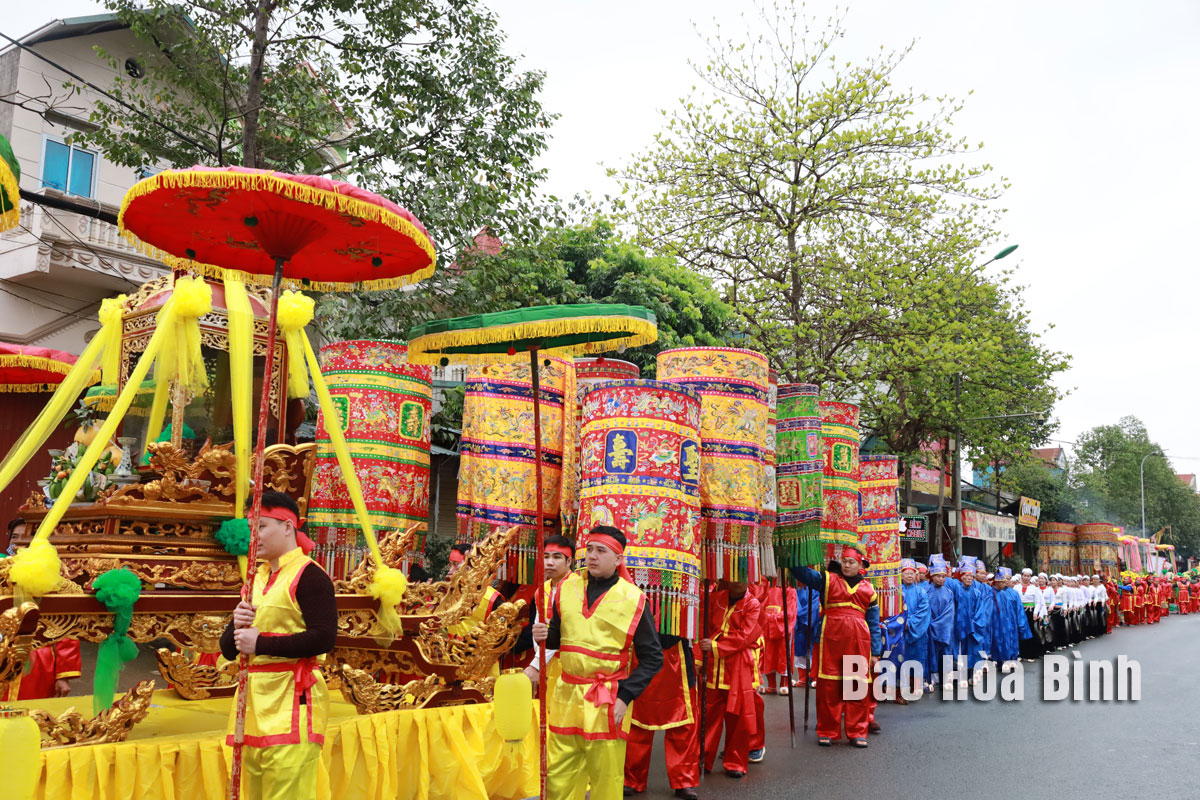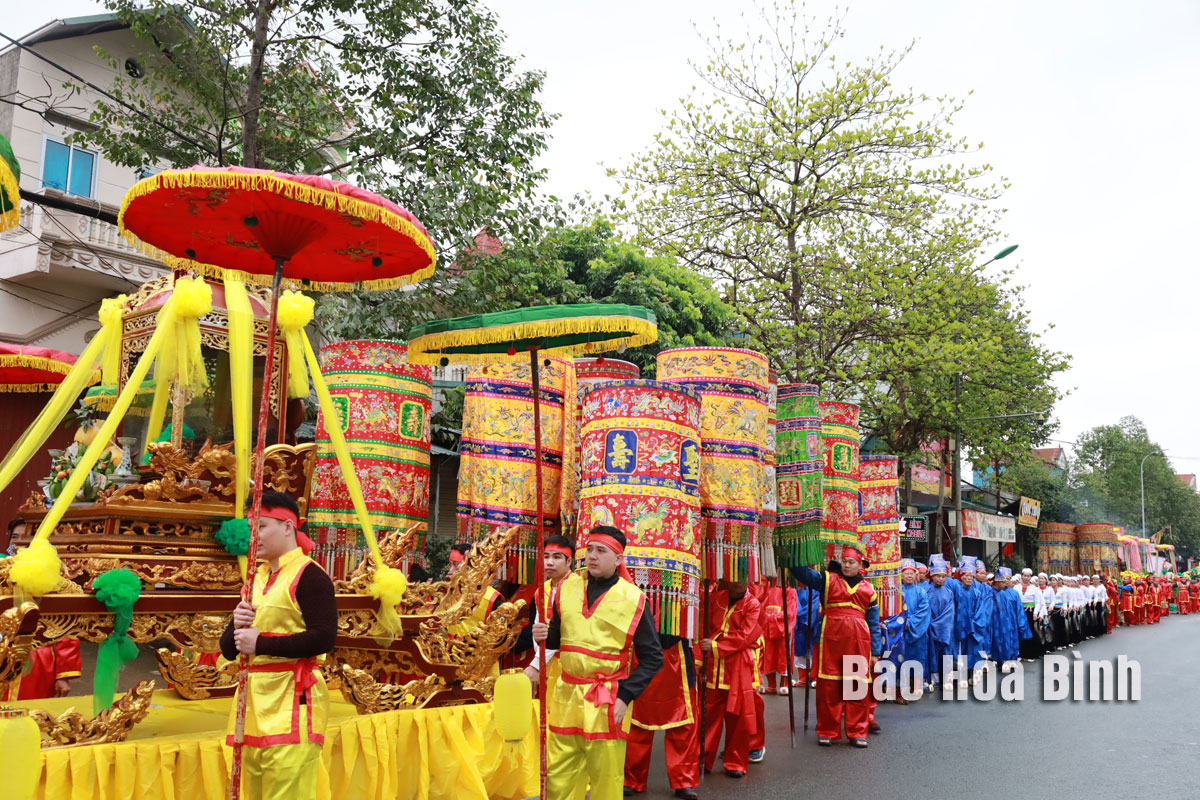
From March 10th – 11th, the People's Committee of Cao Phong town (Cao Phong) coordinated with the Relics Management Board to organize the traditional festival of Thuong Bong Lai Temple in 2024.

The
people were performing the water procession ceremony at Thuong Bong Lai Temple.
Located
at the foot of Rong Head Mountain, in Area 3, Cao Phong town, the temple
worships the Second Thuong Nga Fairy Lady (Co Doi Thuong Ngan) and the saints
of the four realms in the Mother Goddess religion. The temple dates back to the
2nd year of King Thanh Thai's prosperity (Canh Dan year 1890). Through the wars
and ups and downs of the history, the temple was degraded and lost. In 2013,
the temple was rebuilt with flowers and beauty, and the entire architecture was
completed. Every February 2nd of the lunar calendar, the temple
festival opens to admire, worship and pay tribute to Co Doi Thuong Ngan, the
temple's keeper.
Thuong
Bong Lai Temple Festival includes a ceremony and a festival. The ceremony takes
place with a full sequence of rituals, including the water procession ceremony
with the participation of many people moving from Thuong Bong Lai Temple to
Dong Son Temple. The festival is vibrant with the cultural activities, sports,
and folk games (sack jumping, goat catching, pot smashing...).
The
festival attracts a large number of people and tourists from all over to offer
incense, admire, express their respect and filial piety towards their
ancestors, and pray for blessings for the country - people's peace, prosperity,
protecting a peaceful life, moving towards truth - goodness - beauty.
The People's Committee of Lo Son commune, Tan Lac district, has organised the local annual traditional stream fishing festival on April 19 - 20.
As a land deeply intertwined with human history and Vietnam’s millennia-long journey of nation-building and defence, Hoa Binh is often revered for its epic tales and legends.
Residents of Hoa Binh boast a rich cultural identity, reflected in their unique language, traditional attire, customs, and folk melodies – described as "sweet as honey, clear as a mountain stream.”
Lac Son district’s Vu ban town held the 2025 Truong Kha temple festival on April 12–13 (the 15th–16th days of the third lunar month). Since its revival in 2019, the festival has been organised every three years, preserving valuable intangible heritage while meeting the community’s cultural and spiritual needs.
The clothing of women reflects the culture of the Muong, Thai, Tay, Dao, and Mong ethnic groups in the northern province of Hoa Binh.
Gongs hold a special place in the cultural and spiritual life of the Muong ethnic people in Hoa Binh province. More than musical instruments, they are an indispensable part of community rituals and collective memory, echoing through generations as a spiritual thread linking the past, present, and future.



